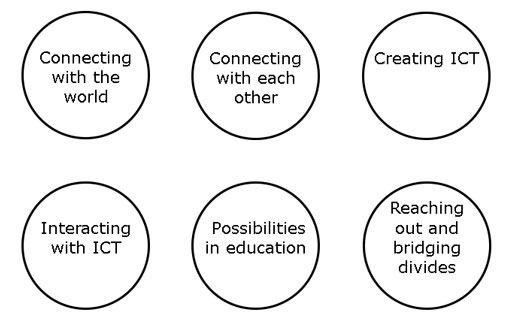5 Developing a strategic approach to ICT

Curricula for ICT in Education (Central Institute of Educational Technology, 2013) identifies six strands that are relevant for teachers and students in building their capacity to handle today’s and tomorrow’s technologies. These strands are as follows:
- Connecting with the world: Information literacy – that is, access to information and resources beyond the textbook for teaching and learning.
- Connecting with each other: For support and professional development, updating different social media, netiquette, etc.
- Creating ICT: To develop teaching resources, documents and audio-visual material, and to use appropriate file conventions and processes.
- Interacting with ICT: Understanding the interfaces and selecting the most appropriate tools; and understanding functionality, troubleshooting and safety, connectivity, and maintenance.
- Possibilities in education: Online resources, interactivity, linking to educational goals, critical view, exploration and experimentation, tools for admin, etc.
- Reaching out and bridging divides: Inclusion in terms of language, visual and auditory impairments, digital communities, wikis, etc.
The Curricula for ICT in Education represents an aspiration. Your ICT strategy will need to take this into account, but it also needs to reflect the current situation in your school. The activities in this unit should have shown you the level of ICT skills and use among your teachers, and provided you with some ideas about how ICT can support professional development and learning in the classroom. Hopefully you have identified one or two ICT champions who will be able to help you to develop your strategy.
In your ICT strategy you will need to remember to:
- improve the confidence and competence of your teachers
- identify ways in which ICT can support teaching and learning in classrooms in your school
- improve the availability of technology by capitalising on technology that teachers already have and identifying ‘high value’ items – things that will make the greatest impact on the greatest number of people.
Activity 8: Building an ICT strategy
Working with your ICT champions, go back over the case studies and your notes from activities, and build an action plan for each of the elements of your strategy.
Check your plan against the Curricula for ICT in Education in order to ensure that the actions you have identified will enable your school to make progress towards the aspiration set out by the government.
4 Linking technology, skills and learning purpose
